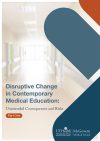Andreas Schleicher, Director for Education and Skills at the OECD highlights the long term consequences of poor performing students and the importance of reducing them…
Far too many students around the world are trapped in a vicious cycle of poor performance and demotivation that leads only to more bad marks and further disengagement from school. Results from PISA 2012 show that more than one in four 15-year-old students in OECD countries were not able to read a simple text, perform a simple mathematical operation, or demonstrate the understanding of basic scientific concepts, even after being at school for at least 9 years.
Poor performance at school has long-term consequences that are hard to compensate, both for individuals and nations. Students who perform poorly at age 15 face a high risk of dropping out of school altogether. And when a large share of the population lacks basic skills, a country’s long-term economic growth is severely compromised. In fact, the economic output that is lost because of poor education policies and practices leaves many countries in what amounts to a permanent state of economic recession – and one that can be larger and deeper than the one that resulted from the financial crisis at the beginning of the millennium, out of which many countries are still struggling to climb. Put the other way round, for lower-middle income countries, the discounted present value of economic future gains from ensuring that all 15-year-olds would at least reach the PISA baseline level of performance would be 13 times current GDP and would average out to a 28% higher GDP over the next 80 years. And for upper-middle income countries, which generally show higher levels of learning outcomes, it would average out to a 16% higher GDP.
Reducing the number of low-performing students is not only a goal in its own right but also an effective way to improve an education system’s overall performance – and equity, since low performers are disproportionately from socio-economically disadvantaged families. Brazil, Germany, Italy, Mexico, Poland, Portugal, Tunisia and Turkey, for example, improved their performance in mathematics between 2003 and 2012 by reducing the share of low performers in this subject.
Multiple risk factors acting in concert
Poor performance at age 15 is not the result of any single risk factor, but rather of a combination and accumulation of various barriers and disadvantages that affect students throughout their lives. Who is most likely to be a low performer in mathematics? On average across OECD countries, a socio-economically disadvantaged girl who lives in a single-parent family in a rural area, has an immigrant background, speaks a different language at home from the language of instruction, had not attended pre-primary school, had repeated a grade, and is enrolled in a vocational track has a 83% probability of being a low performer in mathematics.
While these background factors can affect all students, among low performers the combination of risk factors is much more detrimental to disadvantaged than to advantaged students. Indeed, all of the demographic characteristics considered by PISA, as well as the lack of pre-primary education, increase the probability of low performance by a larger margin among disadvantaged than among advantaged students, on average across OECD countries. In contrast, only repeating a grade or enrolment in a vocational track have greater penalties for advantaged students. In other words, disadvantaged students tend not only to be encumbered with more risk factors, but those risk factors have a stronger impact on these students’ performance.
Less supportive teachers and schools
Students attending schools where teachers are more supportive and have better morale are less likely to be low performers, while students whose teachers have low expectations for them and are absent more often are more likely to be low performers in mathematics, even after accounting for the socio-economic status of students and schools.
In addition, in schools with larger concentrations of low performers, the quality of educational resources is lower, and the incidence of teacher shortage is higher, on average across OECD countries, even after accounting for students’ and schools’ socio-economic status. In countries and economies where educational resources are distributed more equitably across schools, there is less incidence of low performance in mathematics, and a larger share of top performers, even when comparing school systems whose educational resources are of similar quality.
Policies that can help to break the cycle of disengagement and low performance
Given the extent to which the profile of low performers varies across countries, tackling low performance requires a multi-pronged approach, tailored to national and local circumstances. An agenda to reduce the incidence of low performance should therefore include several dimensions:
- Dismantle the multiple barriers to learning;
- Create demanding and supportive learning environments at school;
- Provide remedial support as early as possible;
- Encourage the involvement of parents and local communities;
- Inspire students to make the most of available education opportunities;
- Identify low performers and design a tailored policy strategy;
- Provide targeted support to disadvantaged schools and/or families;
Offer special programmes for immigrant, minority language and rural students;
- Tackle gender stereotypes and assist single-parent families;
- Reduce inequalities in access to early education and limit the use of student sorting.
Andreas Schleicher
Director for Education and Skills
OECD
Andreas.Schleicher@oecd.org

























